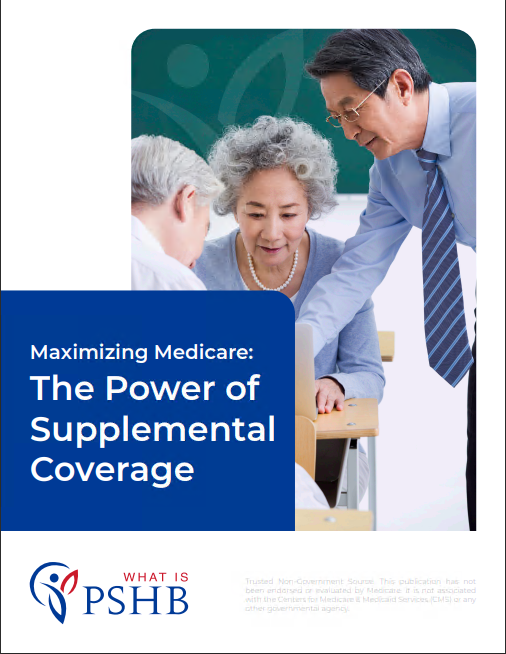Key Takeaways
-
Medigap premiums are rising in 2025 due to higher healthcare costs, inflation, and demographic shifts. Understanding these changes helps you plan effectively for your future.
-
Retirees on fixed incomes can explore strategies like budgeting and considering alternative Medicare coverage options to manage these increasing costs.
What Is Driving Medigap Premium Increases?
If you’re feeling the pinch from rising Medigap premiums this year, you’re not alone. Several factors are contributing to these increases, and it’s essential to understand why costs are climbing.
Rising Healthcare Costs
Healthcare costs are one of the primary reasons Medigap premiums are on the rise. As providers charge more for medical services, insurance companies adjust premiums to reflect those higher expenses. Hospitals, specialists, and even outpatient services are more expensive than ever, driving up the cost of your coverage.
Inflation Impact
Inflation continues to affect nearly every aspect of daily life, and Medigap is no exception. Higher inflation rates mean higher administrative and operational costs for insurers. These expenses often translate into increased premiums for policyholders like you.
Demographic Shifts
The aging population is another significant factor. With more baby boomers reaching Medicare eligibility, the demand for Medigap policies is growing. This increased demand, coupled with higher utilization of healthcare services by older adults, puts upward pressure on premiums.
How Rising Medigap Costs Impact Retirees on Fixed Incomes
As a USPS retiree, you likely rely on a fixed income to cover your expenses. Rising Medigap premiums can strain your budget, making it harder to balance other essential costs like housing, groceries, and utilities.
Budget Challenges
When healthcare costs increase, they often outpace other expenses, leaving you with less flexibility. For retirees who carefully budget each month, even a small premium increase can feel overwhelming.
Reduced Savings Potential
Higher premiums can reduce your ability to save for unexpected expenses. Emergencies or unplanned healthcare needs may force you to dip into your retirement savings or other financial reserves.
Increased Stress Levels
The financial strain of rising premiums can also take a toll on your mental well-being. Worrying about whether you can afford your Medigap policy can create stress, especially when you’re already navigating the complexities of retirement.
What You Can Do to Manage These Rising Costs
While you can’t control premium increases, there are steps you can take to manage these rising costs effectively.
Review Your Policy
Start by reviewing your current Medigap policy. Make sure it still aligns with your healthcare needs and budget. If you’re paying for coverage you don’t frequently use, consider whether switching to a different plan might save you money.
Explore Medicare Advantage
Although Medigap policies offer robust coverage, you might explore Medicare Advantage plans as an alternative. These plans typically have lower premiums but different coverage rules, so weigh the pros and cons carefully.
Budget for Healthcare Costs
Creating a specific budget for healthcare expenses can help you stay prepared. Allocate a portion of your retirement income toward premiums, copays, and other out-of-pocket costs, ensuring these expenses don’t catch you off guard.
Consider State Assistance Programs
Some states offer assistance programs to help Medicare beneficiaries cover their costs. Check if you qualify for programs like the Medicare Savings Program (MSP), which can help pay premiums or reduce other expenses.
Talk to a Financial Planner
Consulting a financial planner who specializes in retirement planning can provide you with strategies to manage rising costs. They can help you optimize your savings and find additional ways to stretch your retirement income.
Why Medigap Remains Valuable Despite Higher Premiums
Even with rising costs, Medigap policies provide critical benefits that can outweigh the expense. Let’s explore why these policies are still worth considering.
Comprehensive Coverage
Medigap fills the gaps in Original Medicare, covering expenses like copayments, coinsurance, and deductibles. This comprehensive coverage can provide peace of mind, especially if you’re managing chronic health conditions.
Predictable Costs
While premiums may be higher, having a Medigap policy means fewer surprise medical bills. Knowing your healthcare costs upfront can make budgeting easier and reduce financial stress.
Nationwide Coverage
Unlike some Medicare Advantage plans, Medigap policies allow you to see any doctor or specialist nationwide who accepts Medicare. This flexibility is especially beneficial if you frequently travel or live in multiple locations throughout the year.
Tips to Prepare for Future Premium Increases
Planning ahead can make future premium increases less impactful on your finances. Here are some practical steps you can take to stay ahead.
Build a Healthcare Reserve Fund
Set aside a dedicated savings account for healthcare expenses. Adding even a small amount monthly can build a financial cushion to handle premium increases or unexpected costs.
Stay Informed
Keep track of Medicare updates and changes that might affect your coverage or costs. Sign up for newsletters or attend informational sessions to stay educated about your options.
Stay Healthy
Taking care of your health can reduce your reliance on medical services, which may indirectly impact your premium rates. Regular check-ups, preventive care, and a healthy lifestyle can go a long way.
Reevaluate Your Plan Annually
During Medicare’s Open Enrollment period, review your Medigap policy and compare it with other options. This annual review ensures your plan continues to meet your needs without unnecessary expenses.
Looking Ahead: Navigating Medigap Premium Trends
The rising cost of Medigap premiums in 2025 underscores the importance of proactive financial planning. As a USPS retiree, staying informed and adaptable can help you navigate these changes without compromising your healthcare.
By understanding the factors behind premium increases and exploring strategies to manage costs, you can continue to enjoy the peace of mind that comes with reliable healthcare coverage. Remember, the key is to stay informed, plan ahead, and seek support when needed.






